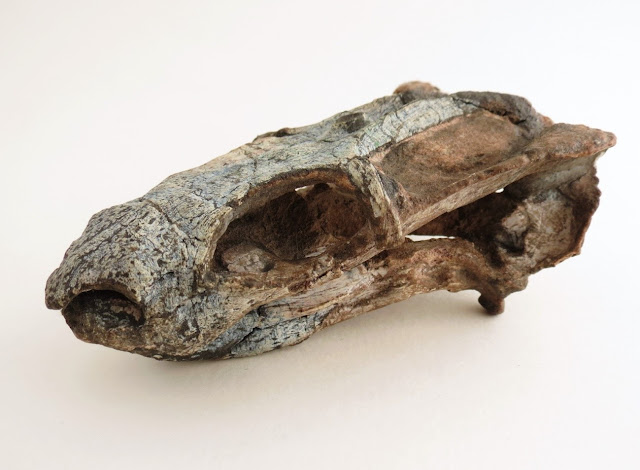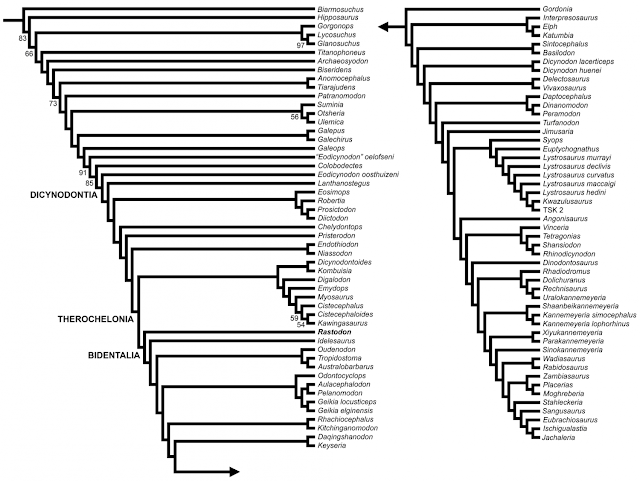Influenza A virus subtype H5N1 study, published today inward PLOS ONE, examines a beautifully preserved dicynodont skull from the Permian of Brazil, in addition to amongst this skull comes a lot of novel data in addition to implications regarding the evolutionary relationships of these herbivorous therapsids that existed globally from the Middle Permian through the halt of the Triassic. The richest tape amongst reckon to abundance in addition to multifariousness of these organisms is recorded from the Beaufort Group of South Africa, only the tape from Brazil has been less extensive, amongst solely ane Permian-age specimen (Endothiodon) previously recorded from the Paraná Basin, in addition to 3 genera from the Triassic.
 |
| Reconstruction of Rastodon procurvidens [Credit: Mario Quiñones Faúndez] |
What makes Rastodon unusual, however, is it's unique organisation of the tusks. Unlike other dicynodonts, the tusks of Rastodon are extremely pocket-size in addition to curved forwards, amongst the tip of each tusk directed towards the front end of the snout. The authors authorities annotation that this is non due to pathological or taphonomical deformation because this morphology is introduce on both sides of the skull in addition to fits nicely into an embayment that is introduce on the caniniform procedure of Rastodon, in addition to each molar displays fine striations that tally the curved shape of the tooth, amongst no cracks that would advise deformation of the teeth.
 |
| The skull of Rastodon procurvidens, holotype UNIPAMPA PV147P [Credit: Felipe Lima Pinheiro] |
The phylogenetic report of Boos et al (2016) recovered Rastodon every bit beingness a fellow member of the dicynodont sublcade Bidentalia. The skull of Rastodon is really generalized when compared to other members of Bidentialia, only nevertheless is united amongst this grouping based on approximately shared derived characters outlined inward the paper.
 |
| Phylogenetic seat of Rastodon procurvidens inside Dicynodontia based on the results of the phylogenetic analysis [Credit: Boos et al (2016)] |
This beautiful specimen illustrates the postulate to attempt to a greater extent than middle Permian deposits from South America, Asia, in addition to African basins exterior of South Africa. The rootage of this various clade is soundless a larger mystery, in addition to every bit the regain of Rastodon shows, at that spot is soundless much to larn most the rootage in addition to development of these odd herbivorous tetrapods.
Author: Sarah Gibson | Source: PLOS Blogs [May 27, 2016]





0 comments